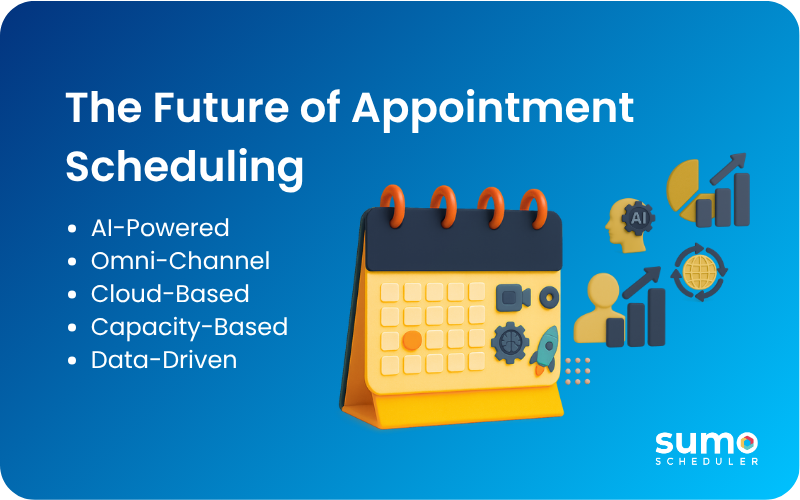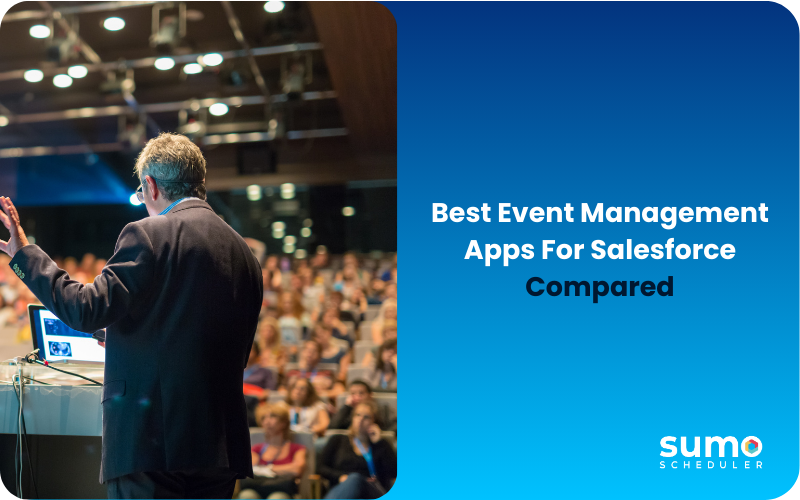At SUMO Scheduler, we talk to organizations and businesses every day — and we shape our platform around their actual needs. In this post, we share our insights on key appointment scheduling trends to watch this year — and how they’re already reshaping sales, healthcare, education, retail, and beyond.
Whether you’re a hospital managing patient flow, a university coordinating academic advising, or a sales team pursuing client calls, the way we schedule appointments is changing fast and for the better.
1. AI Scheduling Assistants Are Becoming the Norm
Smart scheduling assistants have been a hot topic for some time. AI scheduling assistants can book appointments based on your availability, time zone, and even user preferences — all within seconds and in a single system. With AI outreach agents, you can now suggest meetings automatically through website chat or email—making it easier to capture high-intent leads.
In healthcare, AI-driven scheduling reduces no-shows and eases the administrative burden. Studies show that 67% of patients prefer self-scheduling via patient portals or apps, which are both fast and easy to use.
With automated reminders and simple rescheduling through email or SMS, your healthcare organization can significantly reduce patient no-shows.
For example, our customer Medtronic decreased appointment wait times while ensuring that clinicians had time for training and development. Cleveland Clinic also allows patients to book appointments directly through its MyChart app, streamlining the scheduling process and improving access to care.
AI chatbots can handle scheduling and answering questions 24/7, providing immediate help to those who are in need.
Universities are also seeing benefits. Case in point. Using SUMO Scheduler’s AI features, the University of Kentucky now automatically matches students to available tutors based on class subject, availability, and student profile — saving countless hours previously spent on manual coordination.
2. Omni-Channel Scheduling Is Now an Expectation
For customer-facing businesses, easy appointment scheduling is vital for success. Consumers expect to schedule appointments how and when they want — whether it’s online, via SMS, over the phone, or in-app. That’s where omni-channel scheduling comes in.
Retailers, for instance, are offering in-store appointments via website, social media or email campaigns, then confirming them through automated reminders.
Sephora’s makeup appointment booking system lets customers easily schedule in-store beauty sessions with a consultant, automatically matching them with available times and nearby locations.
If you’re looking to encourage foot traffic and boost client’s engagement, retail scheduling software is a perfect way to personalize custom service.
Online appointment scheduling has become a standard in many industries. For instance, 54% of appointment bookings occur during working hours, and 34% of appointments are scheduled online after working hours.
For sales and marketing teams, omni-channel scheduling tools integrated with CRMs (like Salesforce) ensure that no lead is left behind — prospects can book calls instantly from an email or chatbot.
More and more people are booking appointments directly through social media. In fact, over 41% of bookings now come from platforms like Instagram and Facebook. That’s a clear sign: if you’re not offering online booking through your social channels, you’re missing out.
With this in mind, appointment scheduling trends reflect how businesses and customers prefer to communicate today.
3. Cloud-Based Scheduling Is Now Standard
According to the report, Healthcare, Hospitality, and Education are among the leading industries driving adoption of appointment scheduling software — with cloud-based solutions quickly becoming the standard across these sectors.
Cloud-based software minimizes the initial investment required for implementation. Appointment booking software is not an exception. You can select the feasible solution depending on the nature of your service and budget.
In education, cloud-based systems are enabling advisors and students to connect from anywhere.
In healthcare, cloud-based scheduling platforms are making it easier for multi-location clinics to share resources and standardize operations. The HIMSS survey revealed that 70% of providers plan to move scheduling fully to the cloud by 2026, citing cost savings and scalability.
4. Capacity-Based Scheduling Helps Balance Demand
Rather than offering unlimited bookings, modern systems are using capacity-based scheduling to avoid staff overloads and optimize service delivery. This means, you can route appointments based on available personnel, location constraints, or equipment. In field sales or field service, you can minimize travel time by assigning appointments to the nearest representative or specialist.
For example, COVID-19 vaccination clinics used capacity-based scheduling to balance demand while adhering to public health guidelines. Now, the same logic is helping healthcare organizations manage flu shot clinics, mental health visits, and recurring check-ins.
In higher education, capacity rules can ensure that popular advising sessions or orientations don’t get overbooked, reducing student wait times and staff frustration.
5. Actionable Scheduling Data Drives Smarter Decisions
Appointment scheduling is no longer just about “Let me know if we can meet.” It’s about getting booked for the right meeting by creating a chain of meaningful interactions between your business and customers. The key to making that happen is data.
Organizations are now using meeting analytics reports to understand appointment trends, peak times, service gaps, and customer behaviors.
Sales teams, for example, can track no-show rates by rep or region and adjust outreach strategies accordingly. Retail teams can measure in-store consultation success by product category and optimize staffing.
Businesses and organizations using SUMO’s Salesforce-native Scheduler can build dashboards to monitor appointment volume by location or service type, helping forecast demand and staff accordingly — and catching inefficiencies early.
Final Thoughts
Appointment scheduling trends are heading towards intelligent, connected, and flexible tools. Whether it’s AI doing the heavy lifting, cloud infrastructure making everything accessible, or smarter data guiding decisions — scheduling is becoming a strategic advantage across sectors.
If your scheduling process still feels like a patchwork of spreadsheets and emails, 2025 might be the year to rethink it.
SUMO Scheduler supports these workflows natively in Salesforce, giving full visibility into appointment activity across channels.



